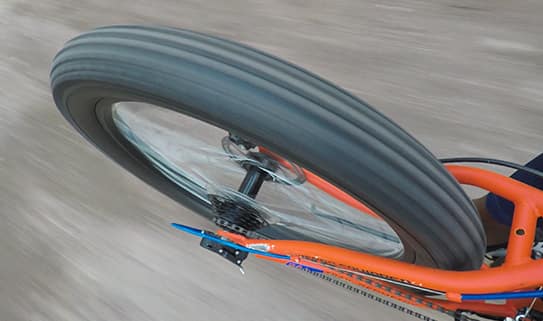Get your order today. Same-Day Pick Up* or Delivery** available.
Learn MoreWe're STILL Shipping! Orders will be delivered through our trusted carriers.
Learn MoreHow to choose a mountain bike
If you’re taking your bike off-road, you need a mountain bike. Look for the features that matter the most to you depending on your riding style and how much you want to spend.
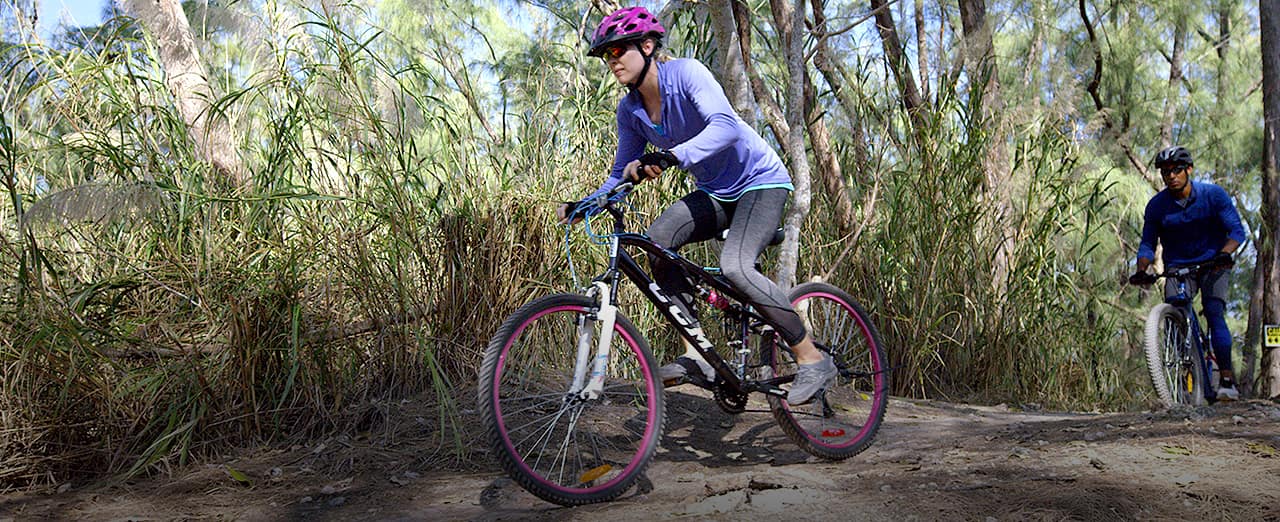

- SUSPENSION
- FRAME
- GEARS
- BRAKES
- WHEELS
Hardtail
Bikes with front suspension, also called hardtail bikes, only have a suspension fork in the front of the bike. This minimizes impact on the front wheel and is good for cross-country riding and trails. These bikes also give you more direct pedal power to the rear wheel for a more efficient ride. Hardtail bikes are generally less expensive than full-suspension models and require less maintenance.
Shop our selection of hardtail mountain bikes >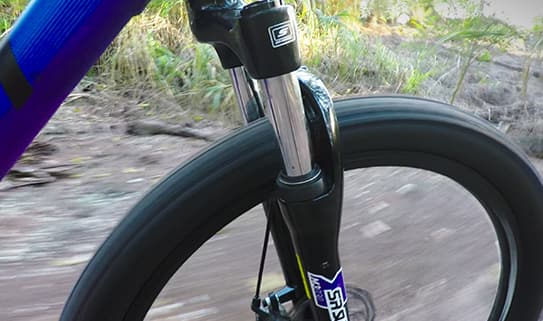
Dual-Suspension
Bikes with Dual Suspension absorb impact in both the front and rear wheels, which creates a more comfortable ride on rough trails and increased traction overall. The only downside is that they can occasionally lose momentum when climbing hills and are less efficient than hardtail bikes.
Shop our selection of dual-suspension mountain bikes >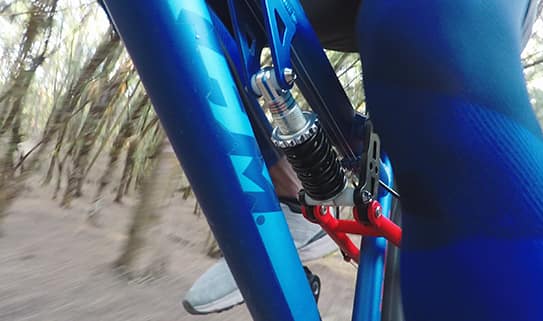
Aluminum
Premium mountain bikes are usually made with an aluminum frame. They are light, durable and rust-resistant. Keep in mind that the lighter the frame, the more expensive the bike.
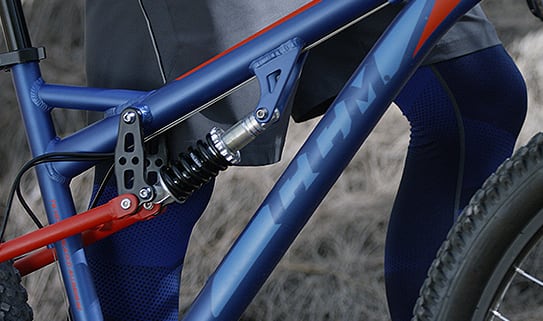
Steel
Steel frames are also common and offer great value for a very tough, durable bike. They give you a smooth ride, but are definitely heavier than aluminum frames.
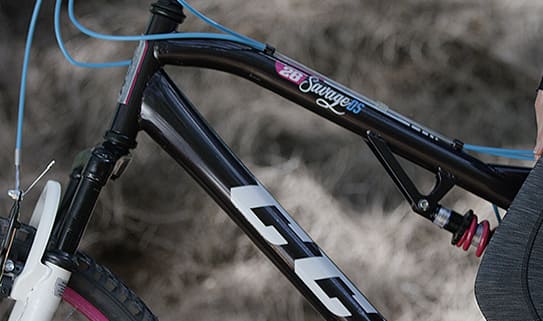
Gears
Typical mountain bikes range from 18-speed to 24-speed. The more speeds on a bike, the wider your riding options over different terrains, specifically climbing hills. Depending on how you’ll be riding, more is not always better. More speeds add weight and maintenance, so if you’ll be riding mostly flat terrain, opt for fewer gears.
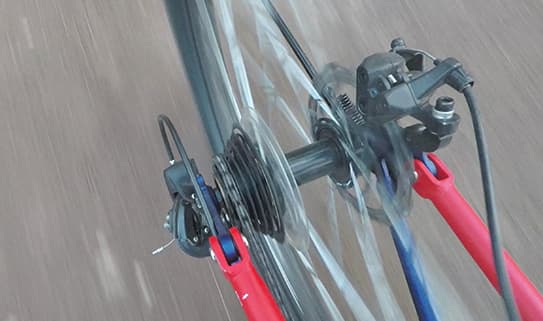
Disc brakes
Disc brakes grip onto a rotor mounted to the wheel hub. They offer the best performance in all conditions, including water, mud, and snow and are found on more premium mountain bikes.
Shop our selection of disc brakes >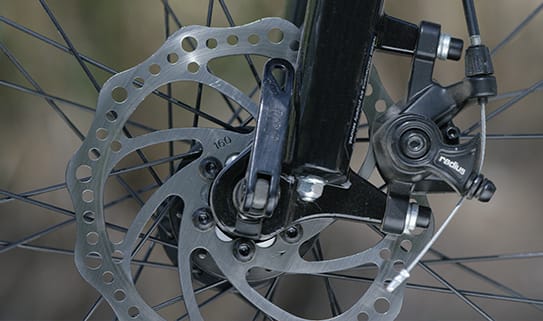
Rim brakes
Rim brakes feature pads that grip onto the wheel rim. They are economical and convenient — the brake pads can be removed and replaced when they wear down.
Shop our selection of rim brakes >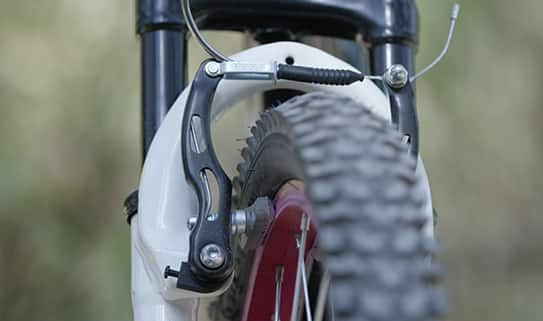
26-inch wheels
Traditionally, 26-inch wheels have been the most common size for mountain bikes. The smaller size means a stronger, lighter wheel and better maneuvering.
Shop our selection of 26-inch wheel mountain bikes >
27.5-inch wheels
The latest trend in mountain bike tires are 27.5-inch wheels, also called 650b. They combine the best of both the 26-inch and the 29-inch wheels, with better comfort over rough terrain and sharp handling.
Shop our selection of 27.5-inch wheel mountain bikes >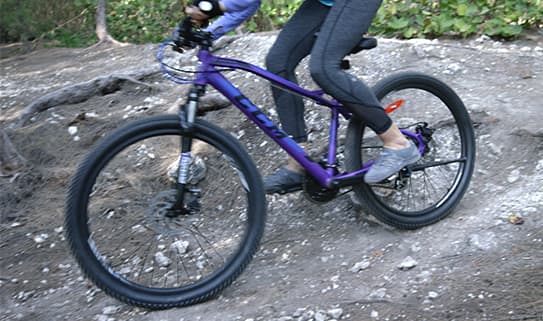
29-inch wheels
The larger circumference of 29-inch wheels handle bumps and trails better and more rubber on the road means improved grip and performance. While it does take longer to accelerate with 29-inch wheel, you can cover a lot more ground in less time.
Shop our selection of 29-inch wheel mountain bikes >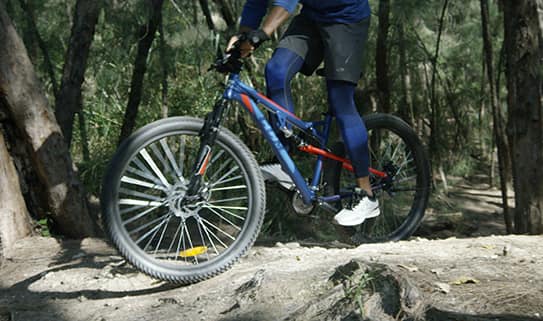
Tire width
Tire Width is also a consideration. Traditionally the most common size for mountain bike tires has been 1.95 inches wide, however the industry is moving to wider or plus size tires. These tires offer improved traction on the trails and a more comfortable and forgiving ride. Look for 2.8 inches or more on the tires, although anything larger than 2.3 inches will give you similar performance. Fat tires are over 4 inches and are used mostly for snow and sand.
